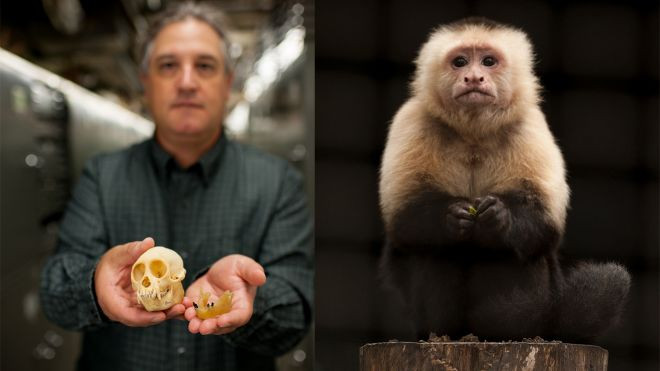The discovery of monkey fossils in North America 21 million years ago
Scientists at the Smithsonian Tropical Research Institute (STRI), based in Panama, have discovered the fossil of a monkey that used to live in North America 21 million years ago while constructing canal works. Digging in the Formación Las Cascadas area.

Panamacebus transitus is the name of the newly discovered primate.
Speaking on April 20 before the press, scientist Carlos Jaramillo said Panamacebus transitus , the name of the newly discovered primate, was placed according to the location of its movement from North to South continent on the route. Seaways that had previously not been connected by the southern part and the northern part of the Americas by Panama territory.
Meanwhile, archaeologist Jonathan Bloch thinks Panamacebus transitus is related to squirrel monkeys currently living in Central and South America. This broke the hypothesis that monkeys in the New World evolved independently in South America, the space considered far away from North America.
This new finding makes scientists consider an option that mammals in South America are more likely to adapt to specific environments in South America than in Panama and Costa Rica.
Along with Panamacebus transitus fossils, archaeologists also found fossils of bats, horses, squirrels, crocodiles, sea turtles . at Formacion Las Cascadas.
- Found the oldest fossil monkey in America in Panama
- Monkey skull fossil 6 million years old in China
- Fossil creatures 65 million years old
- Fossils of the oldest flower in North America
- The discovery of animal fossils dating to 42 million years in Brazil
- The oldest horned dinosaur in North America
- Small horses like ... cats
- Fossils of fleas were found inside the piece of amber 30 million years ago
- Detection of fossil tobacco plants 2.5 million years
- Australia found fossils tens of millions of years old
- Biological fossil discovery 545 million years ago
- Fetal intact in fossil horses 48 million years
 Discovered an ancient centipede fossil 99 million years old
Discovered an ancient centipede fossil 99 million years old Discovered bat-like dinosaurs in China
Discovered bat-like dinosaurs in China Discovered a 200-year-old bronze cannon of the coast
Discovered a 200-year-old bronze cannon of the coast Discover 305 million-year-old spider fossils
Discover 305 million-year-old spider fossils